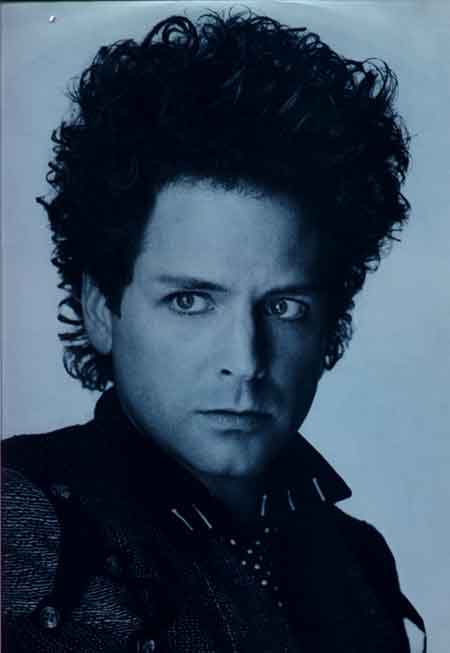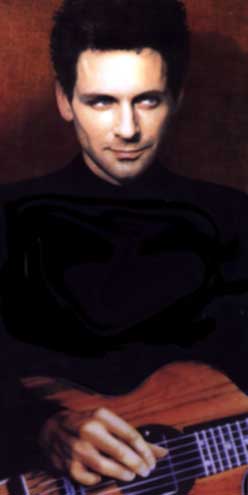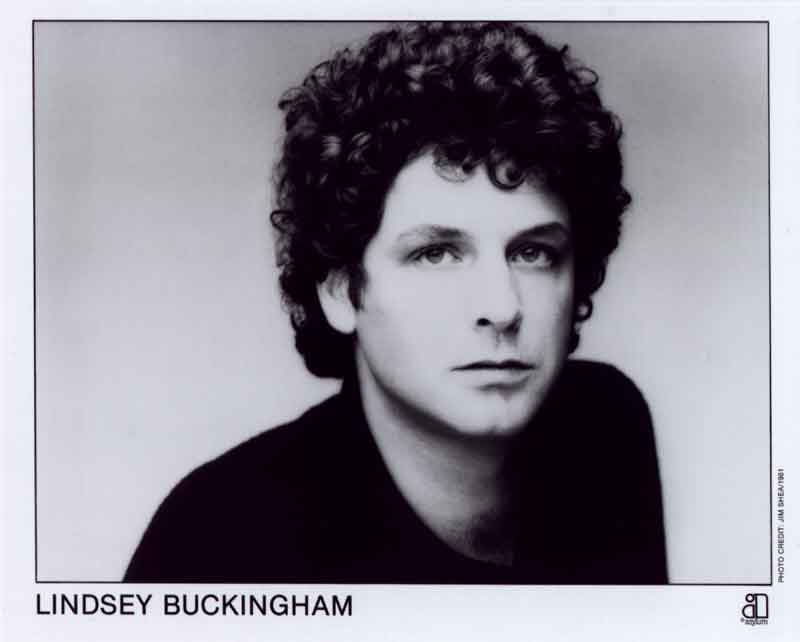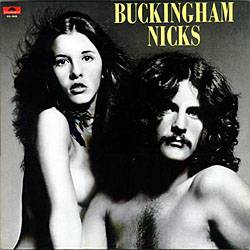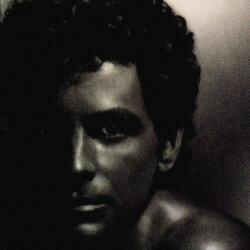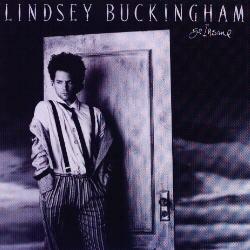|
LINDSEY BUCKINGHAM TALKS
ABOUT "LAW AND ORDER"...
It's late October '81 and Lindsey Buckingham's first solo album, Law
And Order, has just been released. He's eager to talk about it.
"The album was basically a
two-part project," he begins. "It was started in February
'81 in a small storeroom in Burbank, using minimal equipment - just
a multi-track recorder, a small console and a couple of mikes.
During that first phase I worked alone, doing the engineering
myself, and quite a few tracks were very nearly completed
there."
By spring, though, other duties had interrupted; Buckingham was
called away to France to begin tracking a new Fleetwood Mac album.
"Breaking away at midstream from my own project was difficult
at first, but in the end it worked out well," he notes.
"Not only did the break help me gain a new sense of
objectivity, but it also helped me prepare for the second leg, and
to begin sharing ideas with Richard Dashut (Fleetwood Mac
co-producer)."
After completing basic tracking
with Fleetwood Mac, Buckingham and Dashut returned to the States to
begin phase two of Law And Order, working steadily from June through
late August. That part of the project was recorded and mixed in much
more conventional surroundings (Larrabee Sound in Hollywood), and
although from that point on Buckingham and Dashut shared production
duties, Law And Order is basically a one-man show. Buckingham wrote,
arranged, played and sang virtually everything himself.
"Playing the instruments one by one can present a problem in
achieving a 'live' feel on a track, especially with drums, but it's
fascinating to find ways of working around one's limitations. For
example, I'm not an accomplished drummer. It was difficult for me to
achieve the 'hesitated' drum feel so important to rock music,
especially as an overdub. But there was a logical way around that
limitation - I simply recorded a metronome on one track, then sent
it through a delay device and bounced the delayed metronome to
another track. In that way, I was able to play the drums on the
delayed click while playing all the other instruments to the
original click. That spirit of experimentation is something I strive
for, and it manifests itself in many ways throughout the album.
Limitations or not, if the means you use to achieve something
are unusual, the result may also be unusual."
That approach served Law And
Order well. Listeners won't confuse its unique shape and sound with
any other record in the current marketplace. "Every song has a
bit of its own identity," Buckingham says. Keep that in mind as
he comments nts on the individual Law And Order songs...
"BWANA" (Buckingham) - "There's something
about the taste and attitude of '40s music that's very romantic. A
few tunes on the album have a '40s flavor but they're handled in a
rock 'n' roll context. This is one of them. 'Bwana' is quite a
melodic song, but it also conjures up images of a sort of jungle
cartoonland. Oddly, the (basic) track of this tune was completely
finished, background vocals and all, before I sang the lead vocal,
and I had intended to use a certain melody. But just when I was
ready to go out and sing it, Richard said, 'Why don't you go out and
sing it like Frankie Lymon?' So I did. Suddenly, in a matter of
minutes, a whole new melody and set of words emerged."
"TROUBLE" (Buckingham) - "This is the first
single from the album, and the only song on which I didn't play bass
and drums. I had tried playing the drums on this but it wasn't
happening, so we asked Mick to play. He came in one night and we
stayed 'till four in the morning doing takes. But when we came in
the next day, there wasn't one take we felt was solid enough from
start to finish. So we decided to cut a short tape loop of the drum
track, only four seconds, I think. The irony of that was that the
original reason for having Mick play on the song was to approach the
track completely live, as opposed to my usual technique. Ultimately,
we achieved just the opposite, using the same four seconds of Mick's
drums over and over again. I overdubbed the drum fills and cymbal
crashes to create a live feel. George Hawkins, who played bass on
Mick's The Visitor album, put the bass on, and I played some very
pretty half-speed guitars in the choruses. I 'm also quite pleased
with the Spanish guitar solo."
"MARY LEE JONES" (Buckingham) - "There's no
person named Mary Lee Jones, at least not as far as I know. My
girlfriend Carol heard this one and said it reminded her of herself
about a year ago, but it wasn't written with her in mind. It could
be about any of us during certain times in our lives. Musically it's
pretty straight ahead, though the guitar solo at the end is fairly
unusual."
"I'LL TELL YOU NOW" (Buckingham) - "This is
the oldest song on the album. In fact, had it been written a few
months earlier it probably would have gone on the Tusk album. It
deals with experiencing depression, the sense of isolation, feeling
weak after having felt strong...the feeling of needing to communicate but not having the emotional
momentum to do so. The singer promises to 'tell you now,' but he never does."
"IT WAS I" (Gary Paxton) - "Besides reminding me a little bit of
some early Beatles tunes, this 1959 hit (by Skip & Flip) seemed fairly obscure to me, something I've
carried in my memory since I first heard it years ago. The original
version is quite amateurish, and therein lies its charm. I wanted to retain that innocence, and I
think I did."
"SEPTEMBER SONG" (Maxwell Anderson/Kurt Weill) - "A very old song, from the '30s, in
the true Tin Pan Alley tradition. I'd wanted to do this song for a number of years
and knew the chords but not the words. When my father died several years ago, he left
an extensive collection of 78s dating back to the 1920s, and last Christmas I finally
got around to picking them up from my mother's house in Northern California. The
collection was quite influential on many songs on the album. There happened to be a Frank
Sinatra 78 of 'September Song' in there and that's where I got the words. This is
obviously another song with '40s flavor, but rocked up a tad."
"SHADOW OF THE WEST" (Buckingham) - "Here's an analogy of the way you feel sometimes,when you feel as if you're over the hill or you've seen things that meant a lot to you
suddenly disappear. Gone. It's about having to deal with loss, basically - loss of
time, loss of memories, love, youth. Musically, I had wanted to record a Sons Of The
Pioneers song for a while, and then Richard said, 'Why don't you write one yourself?'
So I did."
"THAT'S HOW WE DO IT IN L.A." (Buckingham) - "The closest thing to Fats or Jerry Lee
or Little Richard on the album. People seem to think the song is gonzo, but it's no
more so than many rock 'n' roll songs from 25 years ago. The accepted definition of
rock has certainly changed. In terms of atmosphere, the attempt of many of these songs
was to achieve a throwback sound, a rejection of 1981 'state of the art' in favor of
a sound maybe less correct technically but far richer aesthetically. This song is a
prime example of that. Can you imagine how the atmosphere of '50s rock 'n' roll would
suffer if it had to be recorded under today's so-called 'perfect' conditions?"
"JOHNNY STEW" (Buckingham) - "Here's one of the tracks that we'd completely finished
except recording the vocals. One night we were looking for lyrics, and John Stewart
happened to drop by the studio. Somehow we started singing about Johnny Stew, joking,
really. It went from there. This is also a song on which I tried for an impression
of trumpet and sax sections in the instrumental part, though played on guitars. The
Boris Karloff stuff on the vocals in the break section has a bit of humor to it - I
just started clowning around in the break section while I was doing the lead vocal,
probably just to relieve the tension that sometimes builds in the studio. This time it
added a different dimension to the tune. When good accidents such as this happen, you
leave them in."
"LOVE FROM HERE, LOVE FROM THERE" (Buckingham) - "A definite influence from my father's
78s can be heard here. He loved all the small six- or seven-piece Dixieland combos,
lots of Kid Ory and Bunk Johnson. Despite recording limitations of the time, those are
great records because the performances are so hot. 'Love From Here...' is definitely
a cop of one of that type of scng, again in rock 'n' roll context. The most
noteworthy thing about this scng is not the melody, but the breaking down of the roles the
cornet, clarinet and trombone play in Dixieland jazz, and the emulating of them on
guitars."
"A SATISFIED MIND" (Red Hayes/Jack Rhodes) - "One of my father's all-time favorite
songs, and it's for him. The version I'm most familiar with was Red and Betty Foley's
from 1955. I more or less did the same arrangement. It was in strict waltz time and
my guitar solo is very similar to the fiddle solo on the original. It was meant to be
a simple song, a country song. Funny thing is, I remembered all the words and the
arrangement, but I haven't heard the record in years. I'd like to find a copy and see
how close I got."
|
